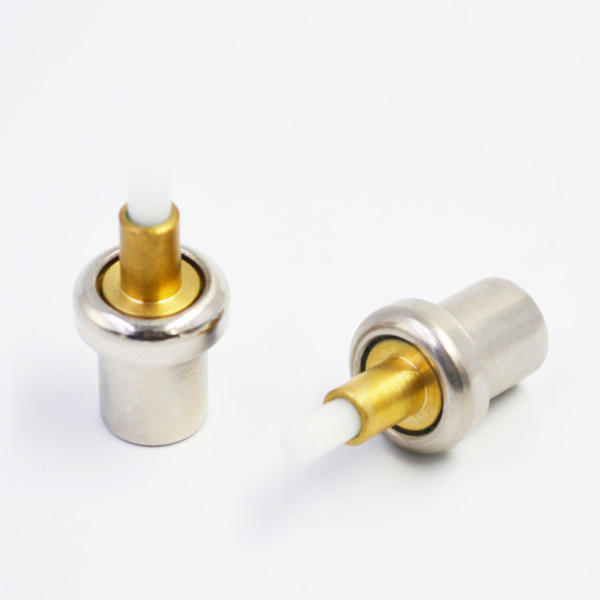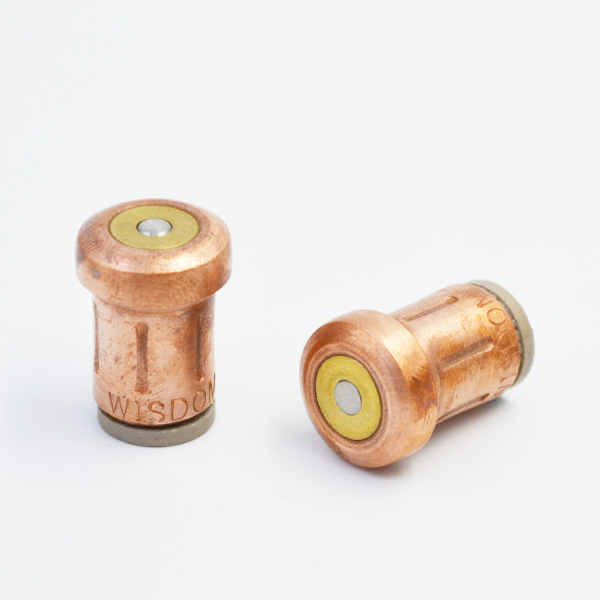An integrated front-end data acquisition controller based on DSP for measuring environmental parameters such as temperature, pressure and vibration at high temperature, high pressure and high speed is introduced. The hardware and software design schemes are given.
The hardware design mainly focuses on two aspects: high-speed data acquisition and large-capacity data storage. The collector has the advantages of high speed, strong processing ability, high reliability and electromagnetic compatibility. In some high-temperature, high-pressure and high-speed experimental occasions, environmental parameters such as temperature, pressure and vibration are the important basis to test the reliability and maintainability of the measured object and its motion device, and provide the necessary basis for the improvement of the measured object. These parameters are measured by thermocouple sensors, pressure sensors and vibration sensors to convert physical information into electrical signals, which are sent to the integrated front-end acquisition controller.

The integrated front-end acquisition controller converts the received electrical signals into digital quantities, saves the data, and uploads the data to the computer through communication interfaces such as Ethernet port, RS422 port and USB port. The computer can process and analyze data, and print out the results of processing in the form of reports and charts. Because of the non-repeatability and complexity of these experiments, the design of an integrated front-end acquisition controller is required to be higher. It not only has the functions of multi-channel high-speed acquisition and large-capacity storage, but also has high reliability, accuracy and electromagnetic compatibility. The working principle diagram of the integrated front-end acquisition controller is shown in Figure 1. The integrated front-end acquisition controller integrates the acquisition channel, main control part and data bus. It is designed with embedded computer technology to realize integrated program control, and has RS422, USB2.0 and Ethernet interface. Each collector has a main control board, whose function is to exchange data with the host computer through the corresponding port, and to control and exchange data with the acquisition board through the control bus.
The composition block diagram is shown in Figure 2. Considering the characteristics of high-speed data acquisition, large-capacity data storage and channel independence, the control of data acquisition and storage is realized by a high-speed 32-bit DSP (digital processing single chip). Compared with ordinary single-chip computer, the DSP single-chip computer has incomparable advantages in running speed and data processing ability, which can fully meet the requirements of high-speed acquisition of the system. In the choice of DSP chips, TI company’s TMS320F2812PGFA 32-bit fixed-point processing DSP chips, the chip not only runs at a high speed (up to 150 MHz of the main frequency), processing functions are powerful, and has a wealth of peripheral devices, easy interface and modular design, its cost-effective ratio is very high. And its unique performance is that the external storage space interface can reach 1MB, programmable waiting state, three independent chip selectors and dozens of GPIO ports to choose from. This feature provides great convenience for managing dual-port RAM (IDT7027) of other data acquisition boards.

The chip has 8K *16 in-chip Flash memory, which can greatly reduce the size of the system, and its power consumption is relatively low (core voltage 1.8V, I/O port voltage 3.3V). In order to facilitate the scalability of the channel, a complete set of parallel data bus and protocol is designed. Each acquisition board has its own control CPU for acquisition and storage control, and through parallel data bus and protocol, a master control board is used to exchange data with the host computer. In order to enhance the reliability of the instrument and the driving ability of the bus, a bus driver is added to each board. Considering the size of the board, the bus driver is made into a CPLD. Its characteristics are high integration, small size and easy to change logic by programming. In order to increase the reliability and independence of the board, we design each board as a relatively independent collector.
CPU, sampling AD, signal conditioning front end, storage disk and communication bus are controlled by oneself. Its composition block diagram is shown in Figure 3. According to the need of the instrument and the convenience of programming and operation with the main control part, the CPU controller also chooses TI’s TMS320F2812PGFA 32-bit fixed-point processing DSP chip. It also has three 32-bit CPU timers. With these three timers, the timing acquisition of AD can be realized, so as to achieve the sampling frequency: 10Hz-160KHz/channel, which can be continuously adjusted. A/D converter is the key part of converting input analog voltage signal into digital signal. A 16-bit high-speed A/D converter AD7663AST chip of AD company is used in the design.
The AD converter has the characteristics of high speed, high precision, low power consumption, single power supply ( 5V), and uses its ( 5V) range file. It can fully meet the requirements of the measuring system for measuring speed and accuracy of 16 bits. Data storage is also a key part of the data acquisition channel. It must satisfy the dual functions of storage capacity and power-down to maintain data.

In the design, static data memory cache and large capacity electronic disk (ADC) are used as storage medium to realize large capacity data storage. Comparing with the common Flash memory, the electronic disk has the advantages of high speed and large capacity. Compared with the common hard disk, the storage capacity is equivalent, the working environment temperature of the electronic disk is wider, the anti-shock and vibration ability is stronger, the volume is smaller, and the installation form is more suitable for the measurement system. According to the storage capacity supported by the program, the user can select the storage capacity of the disk through the host computer software, which can support up to 512M bytes of storage. The purpose of adding dual-port RAM is to realize the real-time monitoring function of the system in the acquisition process.
In the process of sampling, the CPU first places the AD sampling data in the static RAM, and then stores the data in the electronic disk. When the sampling rate is high, the CPU’s working frequency is relatively high. At this time, it is too late to exchange data with the host computer by CPU. Without affecting the acquisition and storage, only the CPU of the main control board takes the data from the acquisition RAM and transfers it to the host computer. Normal single-port RAM has only one read-write interface, but dual-port RAM has two read-write interfaces, so it can realize the function of display while storing. In order to increase the speed and convenience of bus data transmission, the storage area of dual-port RAM is divided into several different areas. All data and commands exchanged between each acquisition board and the main control board are realized by taking data from different areas in RAM. IDT70V28L chip of IDT company is selected according to the need. Its storage capacity is 64kX 16 bits and the power supply is 3.3V. The typical power consumption of the chip is 440 mW and the standby power consumption is only 660 mW. The function of signal conditioning front-end is to normalize the sensor signal into an ideal voltage signal, and then sample and convert it by AD. At present, there are three types of sensor signal output: charge type, single-ended voltage type and differential voltage type. In order to realize the instrument can collect many kinds of signals, three kinds of signal conditioning circuits are made on the acquisition board, and signal switching is realized by analog electronic switch and programming. In order to meet the need of long-term operation without external power supply in the field, large capacity polymer lithium batteries and customized battery protection circuits are selected to ensure stable current output.
Large capacity polymer lithium batteries can be charged according to need. The external battery box can be easily dismantled and transported. The temperature control circuit set in the battery box can also ensure the battery working in low temperature environment. Front-end collector needs to complete three basic functions: data acquisition, data transmission and data storage.
These three parts work together under the monitoring of system software and task scheduling. The main flow chart of software design is shown in Figure 4. After entering the data acquisition system, the program first initializes the system, the internal timer starts timing, starts ADC data acquisition, and the main program enters a dead cycle. When the ADC conversion is completed, it enters the interrupt subroutine, collects and stores the data, and then stores the collected data into the hard disk for data processing and analysis. In the design of integrated front-end acquisition controller, on the premise of meeting the main performance indexes of the whole machine, simplified design, quota reduction design, thermal design, thermostatic element three-proof design and safety design are carried out according to the requirements of reliability. Consideration is given to simplifying the circuit composition, increasing the upper limit of rated component parameters, strengthening the heat dissipation effect, adopting three-proof treatment and adopting insulation treatment to ensure the integration of the front-end acquisition controller. Reliability of terminal acquisition controller. In the design of the integrated front-end acquisition controller, a series of EMC and anti-interference measures are adopted: the input and output of the power module have filter circuits; at the same time, large capacitors are placed at the power entrance of each PCB, and small capacitors are placed at the input interface of each component and signal, thus enhancing the ability of the instrument to resist EMC interference; and the PCB adopts decoupling measures. Power supply, input and output terminals plus filtering; PCB routing has regular forward routing, as far as possible shorten the length of routing; signal line and loop as close as possible, parallel route.
According to the circuit type, the components and logic components are grouped into groups, which are relatively centralized and surrounded by wires around independent functional blocks; multi-layer printed circuit boards are used to increase the contact surface between the power supply layer and the ground layer to enhance the anti-interference ability; the components used in the instrument are screened and selected strictly according to the selection criteria to ensure their anti-interference ability; because the whole machine uses metal shells, it has shielding effect, so it will be greatly improved. Degree reduces internal noise radiation to the outside of the casing. The integrated front-end acquisition controller designed in this paper has the functions of multi-channel, large capacity, high-speed acquisition and storage. Due to the adoption of high performance DSP chip TMS320F2812PGFA and embedded computer technology, reliability design and EMC design are added, which are suitable for some high temperature, high pressure and high speed test occasions.
